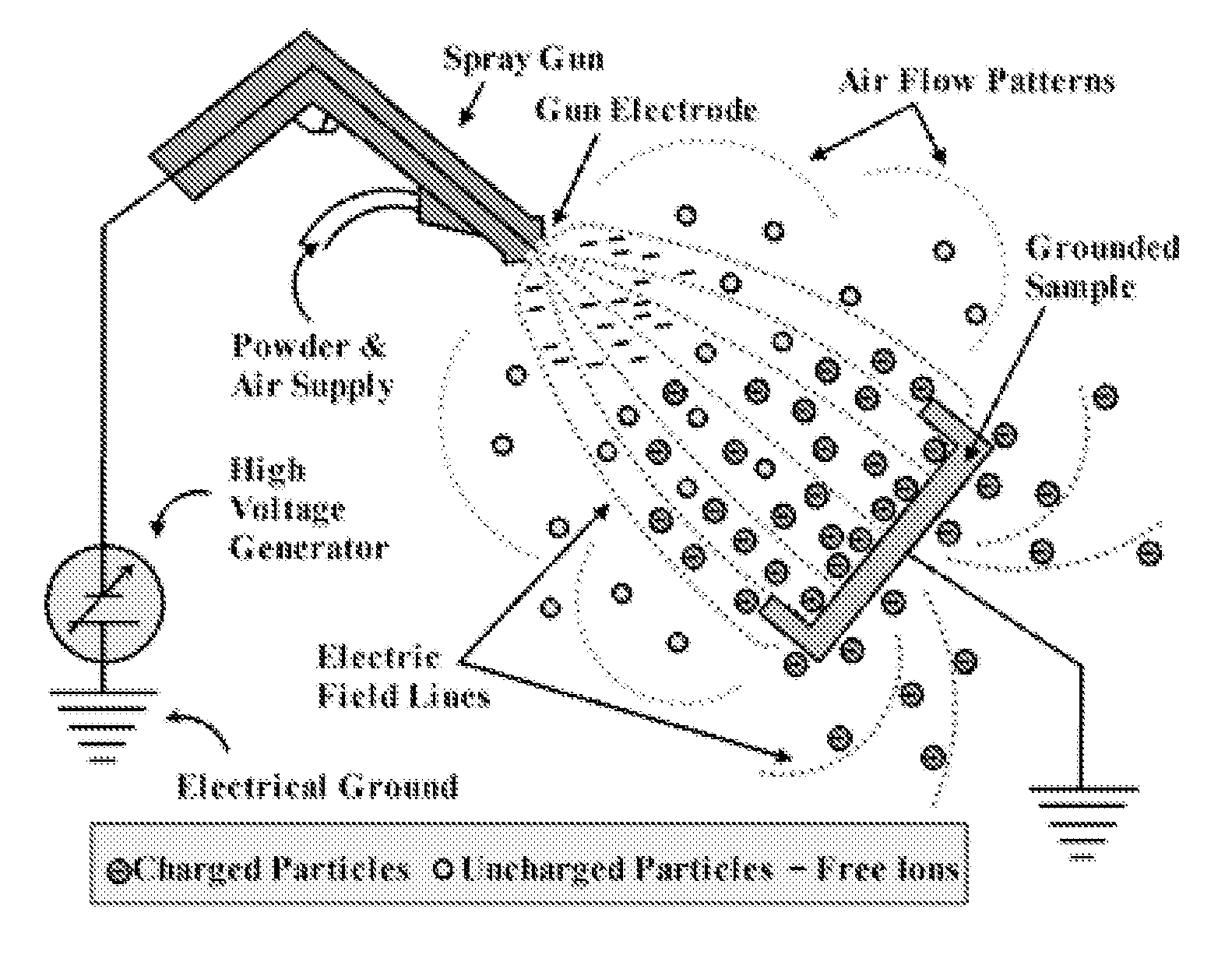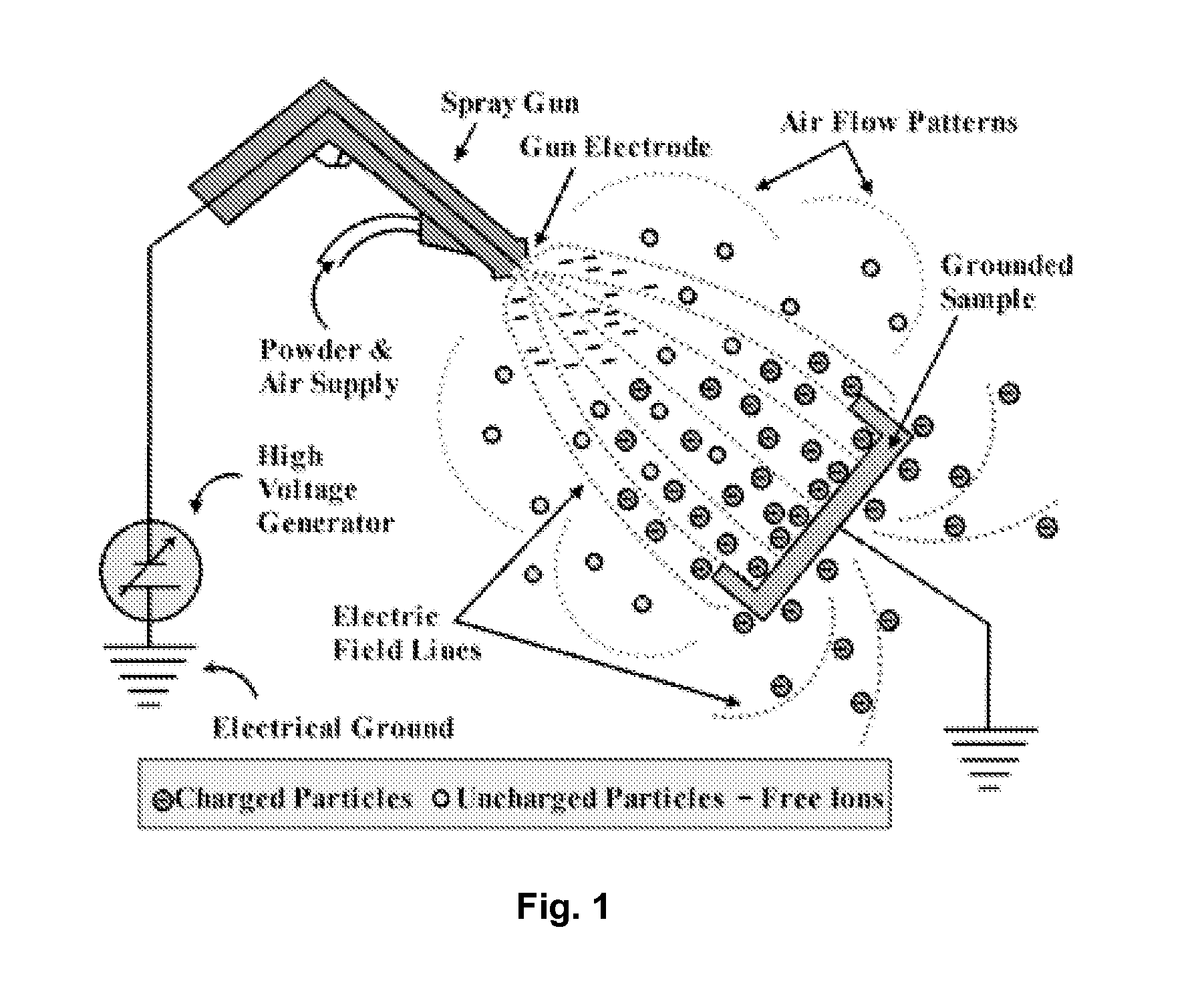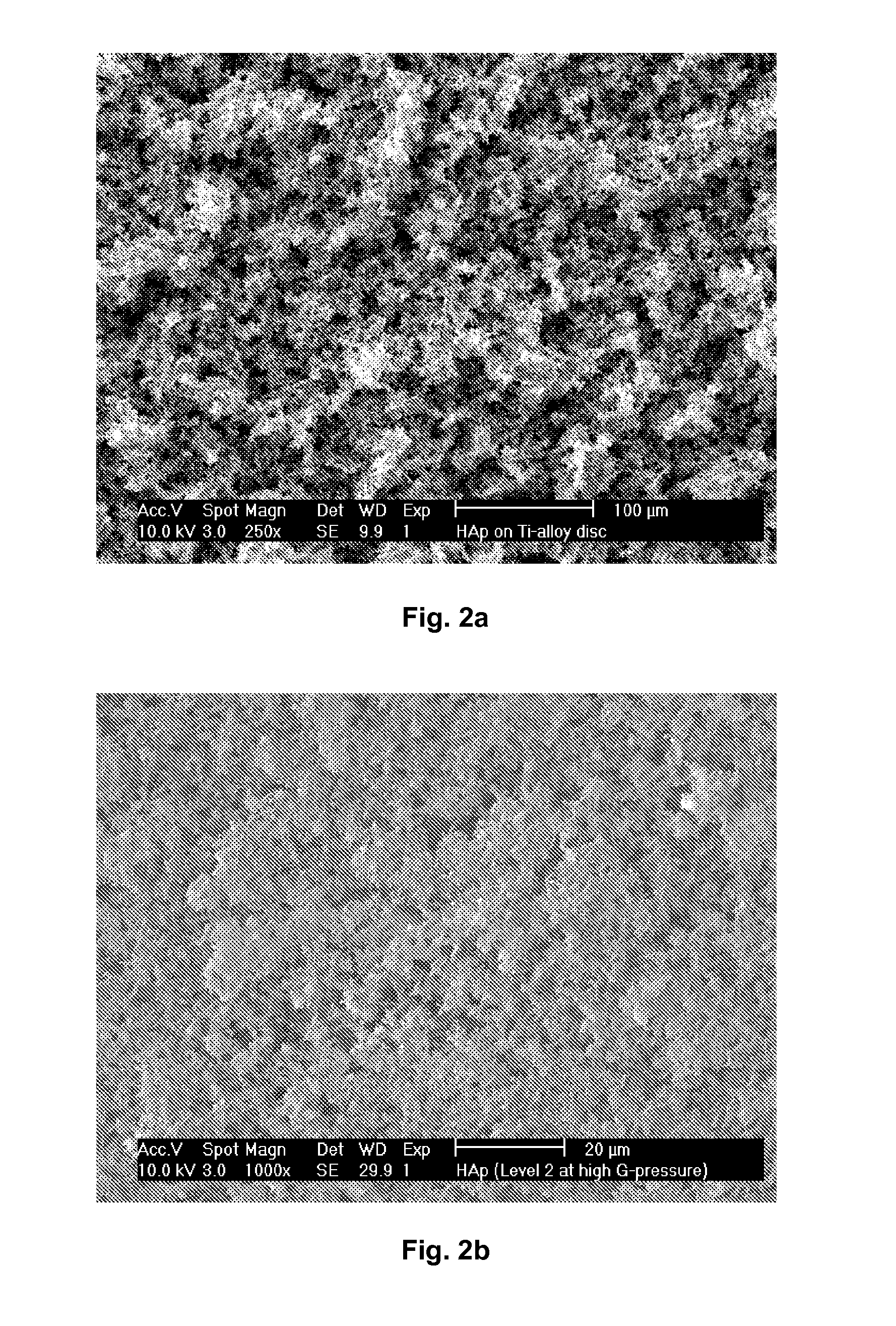Nanostructured Hydroxyapatite Coating for Dental and Orthopedic Implants
a technology of hydroxyapatite and dental implants, applied in the field of dental and orthopedic implants, can solve the problems of poor adhesion between the implant and surrounding, the failure of the hap-coated implant, and the common failure of the implant, and achieves the effects of low cost, high deposition rate, and low energy consumption
- Summary
- Abstract
- Description
- Claims
- Application Information
AI Technical Summary
Benefits of technology
Problems solved by technology
Method used
Image
Examples
Embodiment Construction
[0032]Two preferred embodiments of the invention will be discussed below, one involving an HAp coating and the other a composite HAp-ZnO coating, but the pre-deposition and deposition processes that will be described following are generally common to both. The techniques described herein allow (1) homogeneous mixing, (2) deagglomeration, and (3) deposition and texturing followed by sintering without significant grain growth. These processes are scalable and relatively low-cost.
[0033]In the preferred embodiments, the pre-deposition process begins with ball milling. In ball milling, two main collisions are involved, one between two interacting balls, and the second between a colliding ball and the wall of the container vial. Various parametric considerations are essential, including types of balls and vials to minimize cross contamination, milling time, and charge ratio. In the preferred embodiments, ceramic vials and balls are employed to avoid cross contamination, and an inert gas m...
PUM
| Property | Measurement | Unit |
|---|---|---|
| diameter | aaaaa | aaaaa |
| side length | aaaaa | aaaaa |
| length | aaaaa | aaaaa |
Abstract
Description
Claims
Application Information
 Login to View More
Login to View More - R&D
- Intellectual Property
- Life Sciences
- Materials
- Tech Scout
- Unparalleled Data Quality
- Higher Quality Content
- 60% Fewer Hallucinations
Browse by: Latest US Patents, China's latest patents, Technical Efficacy Thesaurus, Application Domain, Technology Topic, Popular Technical Reports.
© 2025 PatSnap. All rights reserved.Legal|Privacy policy|Modern Slavery Act Transparency Statement|Sitemap|About US| Contact US: help@patsnap.com



